| Listing 1 - 10 of 12 | << page >> |
Sort by
|
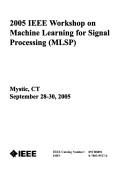
ISBN: 0780395174 1509097384 Year: 2005 Publisher: [Place of publication not identified] IEEE Operations Center
Abstract | Keywords | Export | Availability | Bookmark
 Loading...
Loading...Choose an application
- Reference Manager
- EndNote
- RefWorks (Direct export to RefWorks)
Neural networks (Computer science) --- Signal processing --- Electrical & Computer Engineering --- Engineering & Applied Sciences --- Telecommunications --- Artificial neural networks --- Nets, Neural (Computer science) --- Networks, Neural (Computer science) --- Neural nets (Computer science) --- Artificial intelligence --- Natural computation --- Soft computing --- Data processing --- Digital techniques
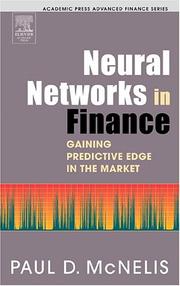
ISBN: 0124859674 9786611008260 1281008265 0080479650 1417577460 9781417577460 1592781829 9781592781829 9780080479651 9780124859678 Year: 2005 Publisher: Burlington, MA : Elsevier Academic Press,
Abstract | Keywords | Export | Availability | Bookmark
 Loading...
Loading...Choose an application
- Reference Manager
- EndNote
- RefWorks (Direct export to RefWorks)
This book explores the intuitive appeal of neural networks and the genetic algorithm in finance. It demonstrates how neural networks used in combination with evolutionary computation outperform classical econometric methods for accuracy in forecasting, classification and dimensionality reduction. McNelis utilizes a variety of examples, from forecasting automobile production and corporate bond spread, to inflation and deflation processes in Hong Kong and Japan, to credit card default in Germany to bank failures in Texas, to cap-floor volatilities in New York and Hong Kong.* Offe
Finance --- Neural networks (Computer science). --- Decision making --- Data processing. --- Neural networks (Computer science) --- Artificial neural networks --- Nets, Neural (Computer science) --- Networks, Neural (Computer science) --- Neural nets (Computer science) --- Artificial intelligence --- Natural computation --- Soft computing --- Funding --- Funds --- Economics --- Currency question --- Finances --- Architecture neuronale
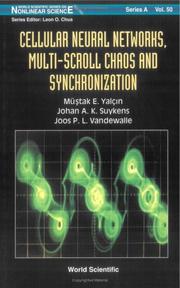
ISBN: 1281347868 9786611347864 9812567747 9789812567741 9789812561619 9812561617 Year: 2005 Volume: v. 50 Publisher: New Jersey London World Scientific
Abstract | Keywords | Export | Availability | Bookmark
 Loading...
Loading...Choose an application
- Reference Manager
- EndNote
- RefWorks (Direct export to RefWorks)
For engineering applications that are based on nonlinear phenomena, novel information processing systems require new methodologies and design principles. This perspective is the basis of the three cornerstones of this book: cellular neural networks, chaos and synchronization. Cellular neural networks and their universal machine implementations offer a well-established platform for processing spatial-temporal patterns and wave computing. Multi-scroll circuits are generalizations to the original Chua's circuit, leading to chip implementable circuits with increasingly complex attractors. Several
Neural networks (Computer science) --- Nonlinear systems. --- Chaotic behavior in systems. --- Synchronization. --- Computer engineering. --- Computers --- Synchronism --- Time measurements --- Chaos in systems --- Chaos theory --- Chaotic motion in systems --- Differentiable dynamical systems --- Dynamics --- Nonlinear theories --- System theory --- Systems, Nonlinear --- Artificial neural networks --- Nets, Neural (Computer science) --- Networks, Neural (Computer science) --- Neural nets (Computer science) --- Artificial intelligence --- Natural computation --- Soft computing --- Design and construction --- Neural networks (Computer science).
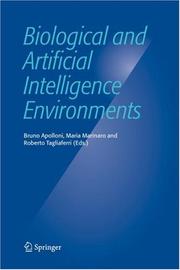
ISBN: 1281118214 9786611118211 1402034326 1402034318 9048168635 Year: 2005 Publisher: Dordrecht : Springer,
Abstract | Keywords | Export | Availability | Bookmark
 Loading...
Loading...Choose an application
- Reference Manager
- EndNote
- RefWorks (Direct export to RefWorks)
Reports the proceedings of the 15th Italian workshop on neural networks issued by the Italian Society on Neural Networks SIREN. This volume contains papers in various fields, such as Pattern Recognition, Stochastic Optimization, Learning, Granular Computing, and more, with a bias toward bioinformatics operational applications.
Neural networks (Computer science) --- Artificial neural networks --- Nets, Neural (Computer science) --- Networks, Neural (Computer science) --- Neural nets (Computer science) --- Artificial intelligence --- Natural computation --- Soft computing --- Information Technology --- Artificial Intelligence --- Artificial intelligence. --- Artificial Intelligence. --- AI (Artificial intelligence) --- Artificial thinking --- Electronic brains --- Intellectronics --- Intelligence, Artificial --- Intelligent machines --- Machine intelligence --- Thinking, Artificial --- Bionics --- Cognitive science --- Digital computer simulation --- Electronic data processing --- Logic machines --- Machine theory --- Self-organizing systems --- Simulation methods --- Fifth generation computers --- Neural computers
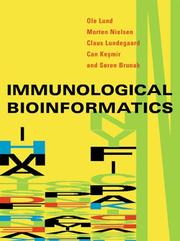
ISBN: 0262122804 9780262323338 0262323338 9781628708615 1628708611 9780262122801 Year: 2005 Publisher: Cambridge, Mass. : MIT Press,
Abstract | Keywords | Export | Availability | Bookmark
 Loading...
Loading...Choose an application
- Reference Manager
- EndNote
- RefWorks (Direct export to RefWorks)
"This book offers a description of bioinformatics techniques as they are applied to immunology, including a succinct account of the main biological concepts for students and researchers with backgrounds in mathematics, statistics, and computer science as well as explanations of the new data-driven algorithms in the context of biological data that will be useful of immunologists, biologists, and biochemists working on vaccine design. In each chapter the authors show interesting biological insights gained from the bioinformatics approach. The book concludes by explaining how all the methods presented in the book can be integrated to identify immunogenic regions in microorganisms and host genomes."--Jacket.
Bioinformatics. --- Computational Biology --- Immune System. --- Immunoinformatics. --- Immunology --- Machine learning. --- Molecular biology --- Neural Networks (Computer). --- Neural networks (Computer science). --- Methods. --- Mathematical models. --- Computer simulation. --- Neural networks (Computer science) --- Bio-informatics --- Biological informatics --- Biology --- Information science --- Computational biology --- Systems biology --- Computational immunology --- Immunological informatics --- Bioinformatics --- Learning, Machine --- Artificial intelligence --- Machine theory --- Artificial neural networks --- Nets, Neural (Computer science) --- Networks, Neural (Computer science) --- Neural nets (Computer science) --- Natural computation --- Soft computing --- Immunobiology --- Life sciences --- Serology --- Molecular biochemistry --- Molecular biophysics --- Biochemistry --- Biophysics --- Biomolecules --- Data processing
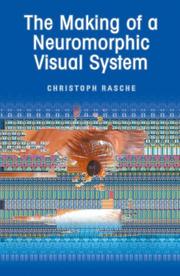
ISBN: 128014775X 9786610147755 0387234691 0387234683 146149849X Year: 2005 Publisher: New York : Springer,
Abstract | Keywords | Export | Availability | Bookmark
 Loading...
Loading...Choose an application
- Reference Manager
- EndNote
- RefWorks (Direct export to RefWorks)
The reader is presented an approach to the construction of a visual system, which is behaviorally, computationally and neurally motivated. The central goal is to characterize the process of visual categorization and to find a suitable representation format that can successfully deal with the structural variability existent within visual categories. It does not define such representations a priori but attempts to show directions on how to gradually work towards them. The book reviews past and existent theories of visual object and shape recognition in the fields of computer vision, neuroscience and psychology. The entire range of computations is discussed, as for example contour extraction in retinal circuits, orientation determination in cortical networks, position and scale independence of shape, as well as the issue of object and shape representation in a neural substrate. Region-based approaches are discussed and are modeled with wave-propagating networks. It is demonstrated how those networks operate on gray-scale images. A completely novel shape recognition architecture is proposed that can recognize simple shapes under various degraded conditions. It is discussed how such networks can be used for constructing basic-level object representations. It is envisioned how those networks can be implemented using the method of neuromorphic engineering, an analog electronic hardware substrate than can run neural computations in real-time and with little power.
Neural networks (Computer science) --- Visual pathways. --- Integrated circuits --- Design and construction. --- Visual system --- Afferent pathways --- Vision --- Artificial neural networks --- Nets, Neural (Computer science) --- Networks, Neural (Computer science) --- Neural nets (Computer science) --- Artificial intelligence --- Natural computation --- Soft computing --- Neurosciences. --- Biomedical engineering. --- Neurobiology. --- Microwaves. --- Biomedical Engineering and Bioengineering. --- Microwaves, RF and Optical Engineering. --- Hertzian waves --- Electric waves --- Electromagnetic waves --- Geomagnetic micropulsations --- Radio waves --- Shortwave radio --- Clinical engineering --- Medical engineering --- Bioengineering --- Biophysics --- Engineering --- Medicine --- Neural sciences --- Neurological sciences --- Neuroscience --- Medical sciences --- Nervous system --- Neurosciences --- Optical engineering. --- Mechanical engineering
Book
ISBN: 1280427264 9786610427260 3764374128 Year: 2005 Publisher: Basel ; Boston : Birkhauser,
Abstract | Keywords | Export | Availability | Bookmark
 Loading...
Loading...Choose an application
- Reference Manager
- EndNote
- RefWorks (Direct export to RefWorks)
This volume is number four in a series of proceedings volumes from the International Symposia on Fractals in Biology and Medicine in Ascona, Switzerland which have been inspired by the work of Benoît Mandelbrot seeking to extend the concepts towards the life sciences. It highlights the potential that fractal geometry offers for elucidating and explaining the complex make-up of cells, tissues and biological organisms either in normal or in pathological conditions, including the structural changes that occur in tumours. It helps develop the concepts, questions and methods required in research on fractal biology and natural phenomena and to evidence the pitfalls of a too simplistic application of these principles in investigating topical subjects of biology and medicine. It discusses present and future applications of fractal geometry, bringing together cellular and molecular biology, engineering, mathematics, physics, medicine and other disciplines and allowing an interdisciplinary vision. The book should be of interest to researchers and students from molecular and cell biology, biomedicine, biomathematics, analytical morphology, immunology and neurology who are interested in the combination of mathematics and life sciences.
Medicine --- Biomathematics --- Fractals --- Mathematics --- Clinical sciences --- Medical profession --- Human biology --- Life sciences --- Medical sciences --- Pathology --- Physicians --- Physiology --- Biology --- Computer simulation. --- Mathematical Models of Cognitive Processes and Neural Networks. --- Physiological, Cellular and Medical Topics. --- Computer Appl. in Life Sciences. --- Simulation and Modeling. --- Mathematics. --- Data processing. --- Computer modeling --- Computer models --- Modeling, Computer --- Models, Computer --- Simulation, Computer --- Electromechanical analogies --- Mathematical models --- Simulation methods --- Model-integrated computing --- Animal physiology --- Animals --- Anatomy --- Neural networks (Computer science) . --- Biomathematics. --- Bioinformatics . --- Computational biology . --- Bioinformatics --- Bio-informatics --- Biological informatics --- Information science --- Computational biology --- Systems biology --- Artificial neural networks --- Nets, Neural (Computer science) --- Networks, Neural (Computer science) --- Neural nets (Computer science) --- Artificial intelligence --- Natural computation --- Soft computing --- Data processing
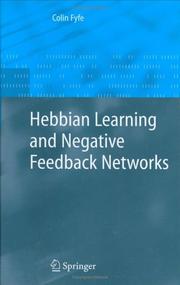
ISBN: 1280938250 9786610938254 1846281180 1852338830 1849969450 Year: 2005 Publisher: New York : Springer,
Abstract | Keywords | Export | Availability | Bookmark
 Loading...
Loading...Choose an application
- Reference Manager
- EndNote
- RefWorks (Direct export to RefWorks)
This book is the outcome of a decade’s research into a speci?c architecture and associated learning mechanism for an arti?cial neural network: the - chitecture involves negative feedback and the learning mechanism is simple Hebbian learning. The research began with my own thesis at the University of Strathclyde, Scotland, under Professor Douglas McGregor which culminated with me being awarded a PhD in 1995 [52], the title of which was “Negative Feedback as an Organising Principle for Arti?cial Neural Networks”. Naturally enough, having established this theme, when I began to sup- vise PhD students of my own, we continued to develop this concept and this book owes much to the research and theses of these students at the Applied Computational Intelligence Research Unit in the University of Paisley. Thus we discuss work from • Dr. Darryl Charles [24] in Chapter 5. • Dr. Stephen McGlinchey [127] in Chapter 7. • Dr. Donald MacDonald [121] in Chapters 6 and 8. • Dr. Emilio Corchado [29] in Chapter 8. We brie?y discuss one simulation from the thesis of Dr. Mark Girolami [58] in Chapter 6 but do not discuss any of the rest of his thesis since it has already appeared in book form [59]. We also must credit Cesar Garcia Osorio, a current PhD student, for the comparative study of the two Exploratory Projection Pursuit networks in Chapter 8. All of Chapters 3 to 8 deal with single stream arti?cial neural networks.
Computer science. --- Mathematical statistics. --- Artificial intelligence. --- Computer simulation. --- Pattern recognition. --- Computer Science. --- Artificial Intelligence (incl. Robotics). --- Probability and Statistics in Computer Science. --- Pattern Recognition. --- Simulation and Modeling. --- Computer Science, general. --- Design perception --- Pattern recognition --- Form perception --- Perception --- Figure-ground perception --- Computer modeling --- Computer models --- Modeling, Computer --- Models, Computer --- Simulation, Computer --- Electromechanical analogies --- Mathematical models --- Simulation methods --- Model-integrated computing --- AI (Artificial intelligence) --- Artificial thinking --- Electronic brains --- Intellectronics --- Intelligence, Artificial --- Intelligent machines --- Machine intelligence --- Thinking, Artificial --- Bionics --- Cognitive science --- Digital computer simulation --- Electronic data processing --- Logic machines --- Machine theory --- Self-organizing systems --- Fifth generation computers --- Neural computers --- Mathematics --- Statistical inference --- Statistics, Mathematical --- Statistics --- Probabilities --- Sampling (Statistics) --- Informatics --- Science --- Statistical methods --- Neural networks (Computer science) --- Artificial neural networks --- Nets, Neural (Computer science) --- Networks, Neural (Computer science) --- Neural nets (Computer science) --- Artificial intelligence --- Natural computation --- Soft computing --- Optical pattern recognition. --- Artificial Intelligence. --- Optical data processing --- Pattern perception --- Perceptrons --- Visual discrimination
Book
ISBN: 1280308435 9786610308439 3540288473 Year: 2005 Publisher: Berlin ; New York : Springer,
Abstract | Keywords | Export | Availability | Bookmark
 Loading...
Loading...Choose an application
- Reference Manager
- EndNote
- RefWorks (Direct export to RefWorks)
Neural networks represent a powerful data processing technique that has reached maturity and broad application. When clearly understood and appropriately used, they are a mandatory component in the toolbox of any engineer who wants make the best use of the available data, in order to build models, make predictions, mine data, recognize shapes or signals, etc. Ranging from theoretical foundations to real-life applications, this book is intended to provide engineers and researchers with clear methodologies for taking advantage of neural networks in industrial, financial or banking applications, many instances of which are presented in the book. For the benefit of readers wishing to gain deeper knowledge of the topics, the book features appendices that provide theoretical details for greater insight, and algorithmic details for efficient programming and implementation. The chapters have been written by experts ands seemlessly edited to present a coherent and comprehensive, yet not redundant, practically-oriented introduction.
Neural networks (Computer science) --- Artificial intelligence. --- AI (Artificial intelligence) --- Artificial thinking --- Electronic brains --- Intellectronics --- Intelligence, Artificial --- Intelligent machines --- Machine intelligence --- Thinking, Artificial --- Bionics --- Cognitive science --- Digital computer simulation --- Electronic data processing --- Logic machines --- Machine theory --- Self-organizing systems --- Simulation methods --- Fifth generation computers --- Neural computers --- Artificial neural networks --- Nets, Neural (Computer science) --- Networks, Neural (Computer science) --- Neural nets (Computer science) --- Artificial intelligence --- Natural computation --- Soft computing --- Engineering. --- Mathematics. --- Telecommunication. --- Complex Systems. --- Theoretical, Mathematical and Computational Physics. --- Engineering, general. --- Information and Communication, Circuits. --- Communications Engineering, Networks. --- Artificial Intelligence. --- Electric communication --- Mass communication --- Telecom --- Telecommunication industry --- Telecommunications --- Communication --- Information theory --- Telecommuting --- Math --- Science --- Construction --- Industrial arts --- Technology --- Statistical physics. --- Dynamical systems. --- Mathematical physics. --- Information theory. --- Electrical engineering. --- Electric engineering --- Engineering --- Communication theory --- Cybernetics --- Physical mathematics --- Physics --- Dynamical systems --- Kinetics --- Mathematics --- Mechanics, Analytic --- Force and energy --- Mechanics --- Statics --- Mathematical statistics --- Statistical methods
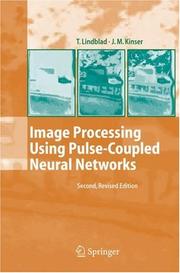
ISBN: 1280312998 9786610312993 3540282939 354024218X 3642063438 Year: 2005 Publisher: Berlin ; New York : Springer,
Abstract | Keywords | Export | Availability | Bookmark
 Loading...
Loading...Choose an application
- Reference Manager
- EndNote
- RefWorks (Direct export to RefWorks)
This is the first book to explain and demonstrate the tremendous ability of Pulse-Coupled Neural Networks (PCNNs) when applied to the field of image processing. PCNNs and their derivatives are biologically inspired models that are powerful tools for extracting texture, segments, and edges from images. As these attributes form the foundations of most image processing tasks, the use of PCNNs facilitates traditional tasks such as recognition, foveation, and image fusion. PCNN technology has also paved the way for new image processing techniques such as object isolation, spiral image fusion, image signatures, and content-based image searches. This volume contains examples of several image processing applications, as well as a review of hardware implementations.
Image processing. --- Neural networks (Computer science) --- Artificial neural networks --- Nets, Neural (Computer science) --- Networks, Neural (Computer science) --- Neural nets (Computer science) --- Artificial intelligence --- Natural computation --- Soft computing --- Pictorial data processing --- Picture processing --- Processing, Image --- Imaging systems --- Optical data processing --- Surfaces (Physics). --- Mathematical statistics. --- Engineering. --- Signal, Image and Speech Processing. --- Surfaces and Interfaces, Thin Films. --- Optics, Lasers, Photonics, Optical Devices. --- Biological and Medical Physics, Biophysics. --- Statistical Theory and Methods. --- Engineering, general. --- Construction --- Industrial arts --- Technology --- Mathematics --- Statistical inference --- Statistics, Mathematical --- Statistics --- Probabilities --- Sampling (Statistics) --- Physics --- Surface chemistry --- Surfaces (Technology) --- Statistical methods --- Signal processing. --- Speech processing systems. --- Materials—Surfaces. --- Thin films. --- Lasers. --- Photonics. --- Biophysics. --- Biological physics. --- Statistics . --- Statistical analysis --- Statistical data --- Statistical science --- Econometrics --- Biological physics --- Biology --- Medical sciences --- New optics --- Optics --- Light amplification by stimulated emission of radiation --- Masers, Optical --- Optical masers --- Light amplifiers --- Light sources --- Optoelectronic devices --- Nonlinear optics --- Optical parametric oscillators --- Films, Thin --- Solid film --- Solid state electronics --- Solids --- Coatings --- Thick films --- Computational linguistics --- Electronic systems --- Information theory --- Modulation theory --- Oral communication --- Speech --- Telecommunication --- Singing voice synthesizers --- Processing, Signal --- Information measurement --- Signal theory (Telecommunication)
| Listing 1 - 10 of 12 | << page >> |
Sort by
|

 Search
Search Feedback
Feedback About UniCat
About UniCat  Help
Help News
News